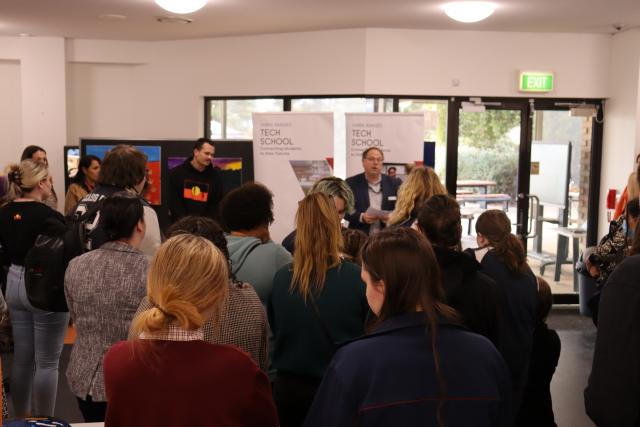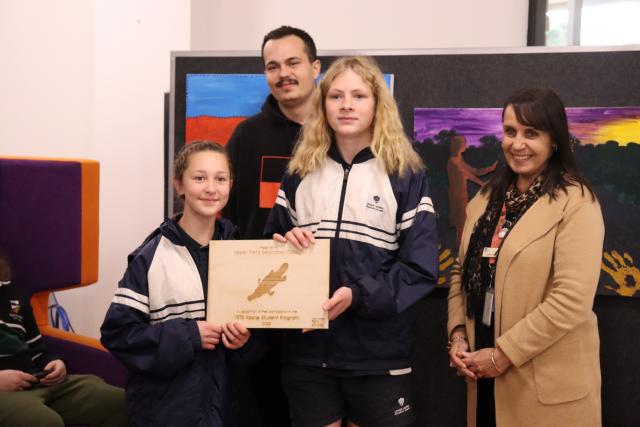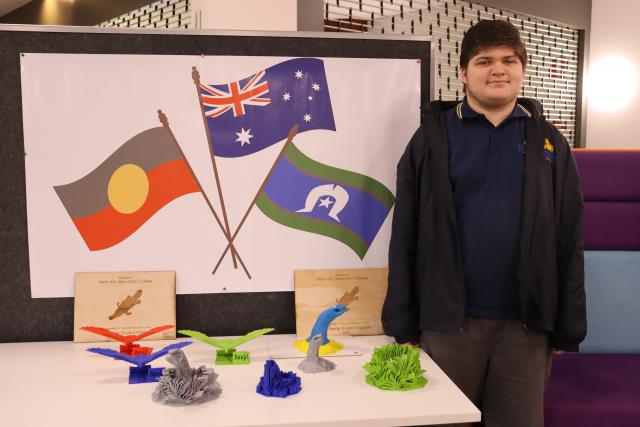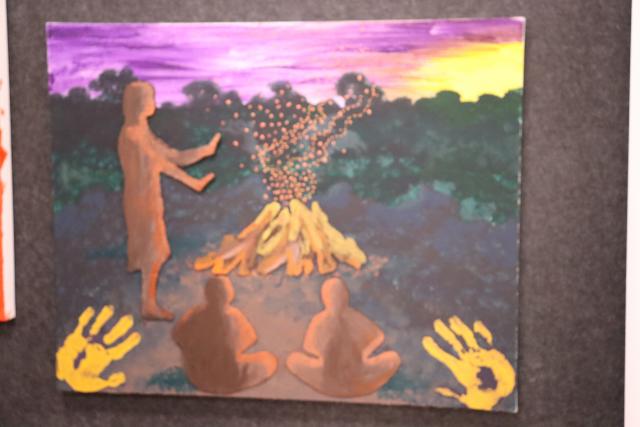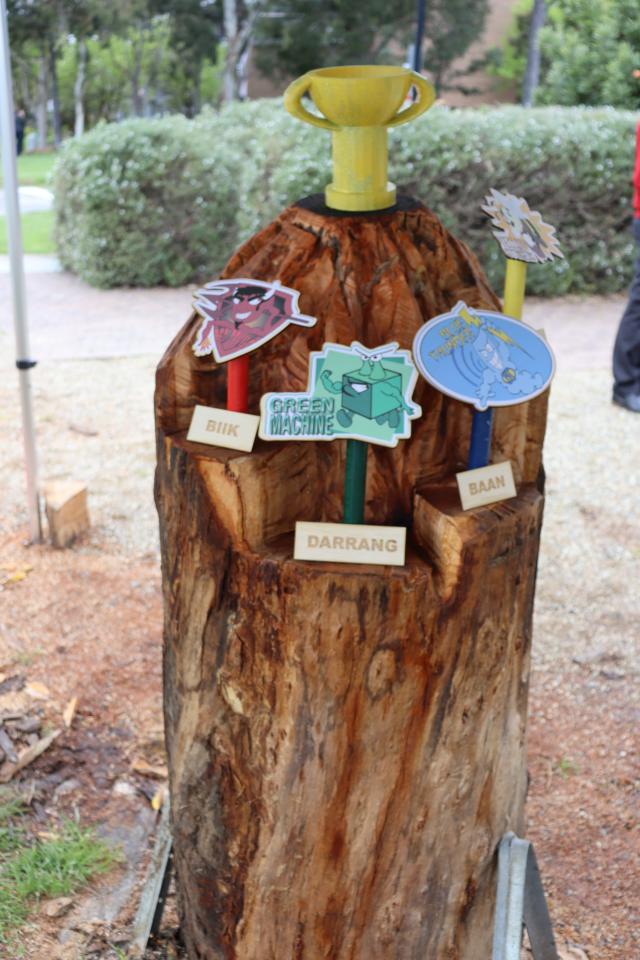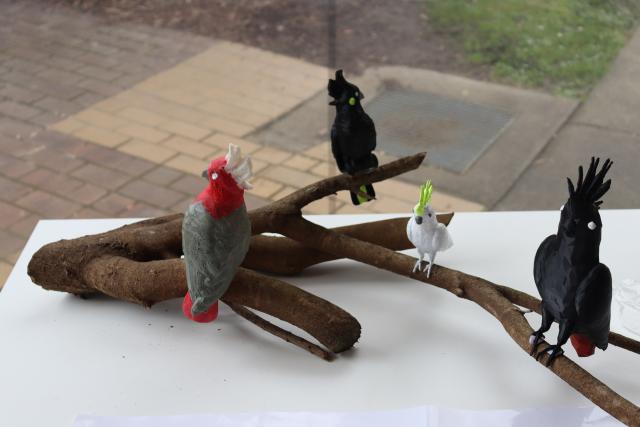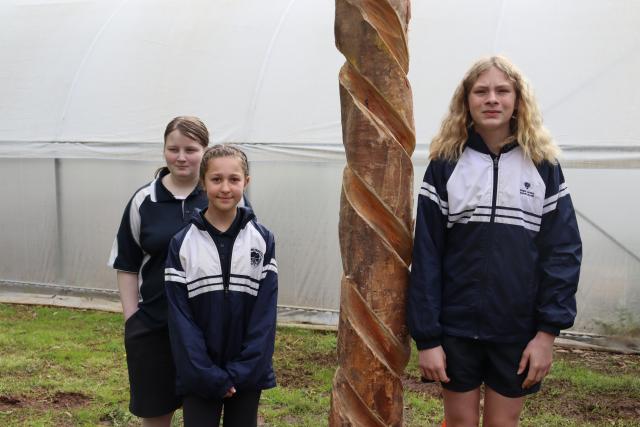
By Mikayla van Loon
Aboriginal students from schools in the Lilydale District and Upper Yarra have just completed an array of individual and group projects, utilising all elements of science, technology and art,
After weeks of planning, designing and building, the Years 7 to 10 students presented their finished technology-based creations at the Koorie Showcase hosted by Yarra Ranges Tech School (YRTS) on Tuesday 13 September.
YRTS director Ashley Van Krieken said over the course of six sessions, students were able to explore design techniques and various modes of equipment to bring their creations to life.
“What we’ve seen is students coming in and really wanting to look at different ways of telling stories or expressing themselves,” he said.
“The key thing to understand was how you can work in teams and you can use digital technologies and you can use science technology, engineering, maths, combined with arts to produce these fantastic opportunities.”
Mr Van Krieken said the laser cutters and 3D printers were favourites of the students but prior to using them, they were taught how to understand programs like illustrator and photoshop.
“In some ways the process is more important…it’s also that fail-fast methodology, that human centred design thinking skills. So we try something, we test it and it might not quite be right. It’s also a lot of resilience building as well.”
In the first phase of the program in 2021, 44 students took part in the showcase from Lilydale Heights College, Upper Yarra Secondary College, Yarra Hills Secondary College, Mooroolbark Secondary College, Healesville High School and Lilydale High School.
Fifteen of those students stayed for the second round this year, with many planning to take part again next year.
Upper Yarra Secondary College students Cooper, Max, Anika and Lara, said their project followed on from what students completed last year.
The aim was to create four large totem poles, depicting water, earth, fire and air to accompany the fire pit which displays Bunjil the Eagle, a symbol which will feature on top of the next totem.
Cooper said the spiral design of this first water totem will spin the rainwater down the wooden sculpture.
With the help of land sciences students at Box Hill TAFE the spiral feature was chainsawed into the wood.
Using laser cutters for the leaves, Anika said they will form part of the finished design.
“We’re going to put the leaves in a crown formation and we’re going to put them on top of the totem after it’s cemented in and
“We’re also going to paint it so the water doesn’t rot it when it goes down and we’re thinking, for the other totems, we might do either pokerwork or chisel.”
Anika said the totems and the fire pit will be placed at the entry of the school to welcome people.
All wood used for the totems has and will come from rescued logs Box Hill TAFE acquired after the storms last year.
For Yarra Hills Secondary College student Zac, who took part in the Koorie Showcase cohort last year, he continued to tell important Indigenous dreamtime stories through his works.
Having already explored the story of Bunjil using 3D printers, Zac decided this year to tell the story of the rainbow serpent.
Zac said he started with a plasticine sculpture of his rainbow serpent design then used the 3D scanner to digitally sculpt the serpent into a program where he could then tweak it until finally printing it.
“Then I made a waterspout because, I call it Kabul, so Kabul’s thing is water, death and desert. So in my dreamtime, it slithered through the desert making all the rivers and lakes. So it’s bursting through the desert with a giant waterspout,” he said.
Although a challenging design and having never really used much of the equipment aside from last year, Zac said “you can tell what it is, it’s just not the clearest.”
Going one step further, Zac has been able to incorporate virtual reality into his design. Using specific goggles, Zac’s rainbow serpent comes to life in a different form, where people can see and spin the whole model.
Zac said choosing a favourite part of the course was hard to do because he enjoyed all of it so much but getting to explore and share his Aboriginal culture was a highlight.
“Everyone has been really supportive and just knowing I can express my culture without criticism has been really good,” he said.
Giving students a safe environment, without any pressure was something Mr Van Krieken said was an integral part of the program.
“We wanted it to be a very relaxed atmosphere. We wanted it to have a very safe atmosphere and space for the students to explore what they wanted to do, explore their community connections, their cultural connections,” he said.

